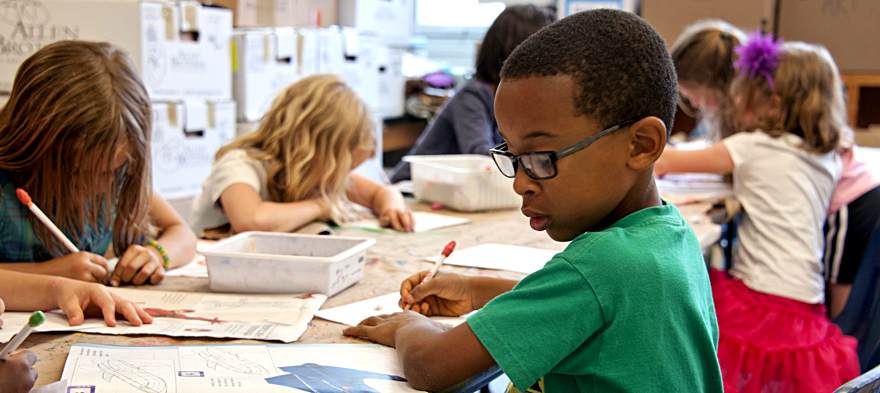
Sep 14, 2020 12:26:00 AM
by April Callen
Co-authored by Lauren Jacobs, a Senior Consultant at the Partnership for the Future of Learning.
In 1967, Elvis Presley released “Run On,” his version of the old folk song, “God’s Gonna Cut You Down.” Recorded years earlier by Civil Rights activist, singer and songwriter Odetta, the song cautions:
Well you may throw your rock and hide your hand
Workin' in the dark against your fellow man
But as sure as God made black and white
What's down in the dark will be brought to the light.
Right now, nowhere is that point more poignant than the fault lines in our public, private, and economic systems that are being vividly exposed during this pandemic. Whether looking at the disproportionate impact coronavirus has had on Black, brown, and Indigenous communities, or the number of children who depend on school for meals and stability, this virus has shed light on the inequities and inequality that have long existed in our country.
But as with any revelation, [pullquote]we have an opportunity to redress and reset the course, and put ourselves on a path that is just, equitable, and holds us collectively accountable[/pullquote] to the promise of our society’s democratic ideals. One place we can work together to account for the harms of the past and ensure a positive future is our public education system. We need to encourage states to make strong, solid investments in this bedrock of our nation.
Just as this pandemic has shown the ways in which many of our current social and political systems are not working, it has revealed to us that schools are first responders to communities; they are innovation hubs for learning; and they are our children’s first experiences with being members of a democratic society.
Schools are not simply containers for learning. School is where relationships are formed and where a sense of the collective, greater good is established. Leaders must protect, affirm and invest in that institution.
It took a global pandemic to see how disinvestment in public health agencies affects us all. Public education is headed in the same direction. [pullquote]We must re-invest in public health, and also in public education, to see ourselves back to a healthy economy and society.[/pullquote]
We can do that if we:
As evidenced by the ongoing racial justice protests and the broader response to the coronavirus pandemic, this precarious time has brought forth a sense of hope, of interconnectedness, and resilience—locally, nationally, and globally. We see it in naming healthcare workers and teachers heroes, in the mutual aid funds created to help workers in the hospitality industry. And as it relates to education, we see it in schools and communities working together to ensure students are still fed during the closure.
As we celebrate bright spots of humanity, we are also collectively acknowledging and processing loss—of jobs, of stability, of normalcy, and of course, life. That processing will continue on, and schools will play a significant role—if they have the resources to do so. Policy changes are needed to support people-led movements of interdependence. But we, collectively, also play a role in advancing and advocating for the right policies to uplift in this moment. Let investment in public education be one of them.
The story you tell yourself about your own math ability tends to become true. This isn’t some Oprah aphorism about attracting what you want from the universe. Well, I guess it kind of is, but...
If you have a child with disabilities, you’re not alone: According to the latest data, over 7 million American schoolchildren — 14% of all students ages 3-21 — are classified as eligible for special...
The fight for educational equity has never been just about schools. The real North Star for this work is providing opportunities for each child to thrive into adulthood. This means that our advocacy...
Your donations support the voices who challenge decision makers to provide the learning opportunities all children need to thrive.
Ed Post is the flagship website platform of brightbeam, a 501(c3) network of education activists and influencers demanding a better education and a brighter future for every child.
© 2020–2024 brightbeam. All rights reserved.
Leave a Comment